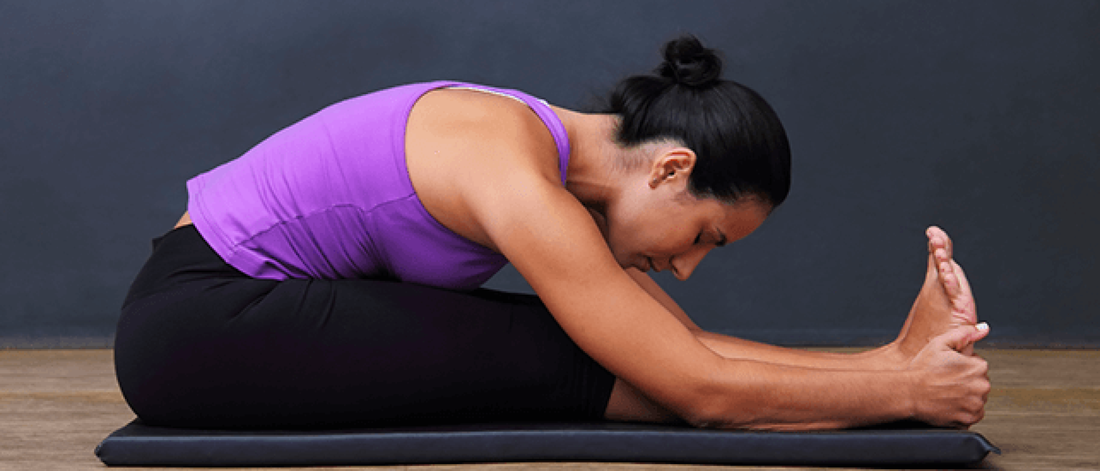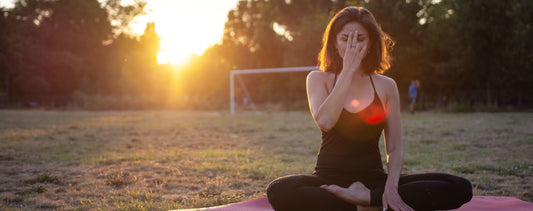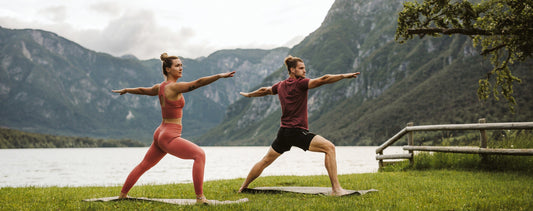Tight hamstrings are extremely common for beginning yoga students. Even after a decade of yoga practice, some students find that hamstring flexibility is still a work in progress. Although, some gains are made, years of bad footwear choices combined with congenital anatomy can leave many yogis frustrated in poses like downward facing dog and seated forward bends.
Extreme flexibility is also a concern. People with loose hamstrings sometimes have a tendency to stretch in ways that cause injury. Those darn hamstrings!
More than vanity and pride are at stake here. Tight hamstrings can lead to lower back, hip, and knee problems. If the hamstrings are too tight, the lower back flattens out, causing the loss of the normal curve in the lumbar spine. This is how low back injuries occur—not just for yogis but all types of athletes. This is just one of the many reasons why it’s so important to stay flexible. A 2009 study in the American Journal of Physiology suggests that improving flexibility can even help prevent age-related arterial stiffening.
Loose hamstrings, on the other hand, can lead to overstretching, which causes pain in the sit bones and knees, as well as damage to ligaments and tendons.
In short, making friends with your hamstrings is a good idea. A few basic modifications in your practice combined with healthy lifestyle choices can make all the difference in hamstring flexibility, overall posture, and the prevention of injuries.
In comparison, barefoot cultures experience different muscle development altogether. Their foot structure is more natural versus a foot that conforms to shoes over time. While going barefoot isn’t really an option, and high heels are occasionally necessary, you should remain cognizant of your footwear choices and do what you can to alleviate the effects of high heels.
Start with your knee bent and then straighten it out. Engage the inner thighs and flex the foot so that the sole of the foot faces the ceiling. The leg that’s not being stretched should be straight and in contact with the floor. Avoid locking the knees and maintain a natural inward curve in the lower back. Use your quadriceps to straighten the leg properly. Be mindful that more muscles are involved than just the hamstrings, so don’t stretch past 90 degrees.
Uttanasana (Standing Forward Bend)
Avoid contracting the hamstrings by locking your knees. Maintain a bend or microbend in the knees to put the emphasis on the quads and take pressure off the knees. This helps to stretch the hamstrings and avoid excess rounding in the upper back. Avoid folding too far forward and overstretching the inner thighs. Engage your quads, and tent your fingers. Slightly lift the toes to avoid gripping. Press down into the heels. Use a yoga block for added height if hamstrings are really tight.
Extreme flexibility is also a concern. People with loose hamstrings sometimes have a tendency to stretch in ways that cause injury. Those darn hamstrings!
More than vanity and pride are at stake here. Tight hamstrings can lead to lower back, hip, and knee problems. If the hamstrings are too tight, the lower back flattens out, causing the loss of the normal curve in the lumbar spine. This is how low back injuries occur—not just for yogis but all types of athletes. This is just one of the many reasons why it’s so important to stay flexible. A 2009 study in the American Journal of Physiology suggests that improving flexibility can even help prevent age-related arterial stiffening.
Loose hamstrings, on the other hand, can lead to overstretching, which causes pain in the sit bones and knees, as well as damage to ligaments and tendons.
In short, making friends with your hamstrings is a good idea. A few basic modifications in your practice combined with healthy lifestyle choices can make all the difference in hamstring flexibility, overall posture, and the prevention of injuries.
Hamstring Happiness Part 1: Posture
Listen up, ladies. Although stylish and lovely, high heels throw your entire posture off balance and prevent you from using your heels properly when you walk. When wearing heels, your hips shift forward and your knees hyperextend. When this happens, the hamstrings have to stabilize your posture, effectively bypassing the gluteal muscles, which normally stabilize the pelvis over the legs. To hold the hips in place, the hamstrings have to tighten, and this constant contraction makes hamstrings tighter and tighter over time.In comparison, barefoot cultures experience different muscle development altogether. Their foot structure is more natural versus a foot that conforms to shoes over time. While going barefoot isn’t really an option, and high heels are occasionally necessary, you should remain cognizant of your footwear choices and do what you can to alleviate the effects of high heels.
Hamstring Happiness Part 2: Proper Stretching
Locking the knees in certain standing, balancing, and forward-bending postures may be harmful or counter productive to joint and hamstring health, and it doesn’t allow for proper stretching. If your hamstrings are tight, this is a practice that you might need to unlearn. Alternatively, if your hamstrings are loose, bending your knees can help prevent overstretching and injury. Keep a slight bend in your legs for postures that involve standing or forward bends.Yoga Poses for Hamstrings
Supta Padangusthasana (Reclining Big Toe Pose)Uttanasana (Standing Forward Bend)
Avoid contracting the hamstrings by locking your knees. Maintain a bend or microbend in the knees to put the emphasis on the quads and take pressure off the knees. This helps to stretch the hamstrings and avoid excess rounding in the upper back. Avoid folding too far forward and overstretching the inner thighs. Engage your quads, and tent your fingers. Slightly lift the toes to avoid gripping. Press down into the heels. Use a yoga block for added height if hamstrings are really tight.






















